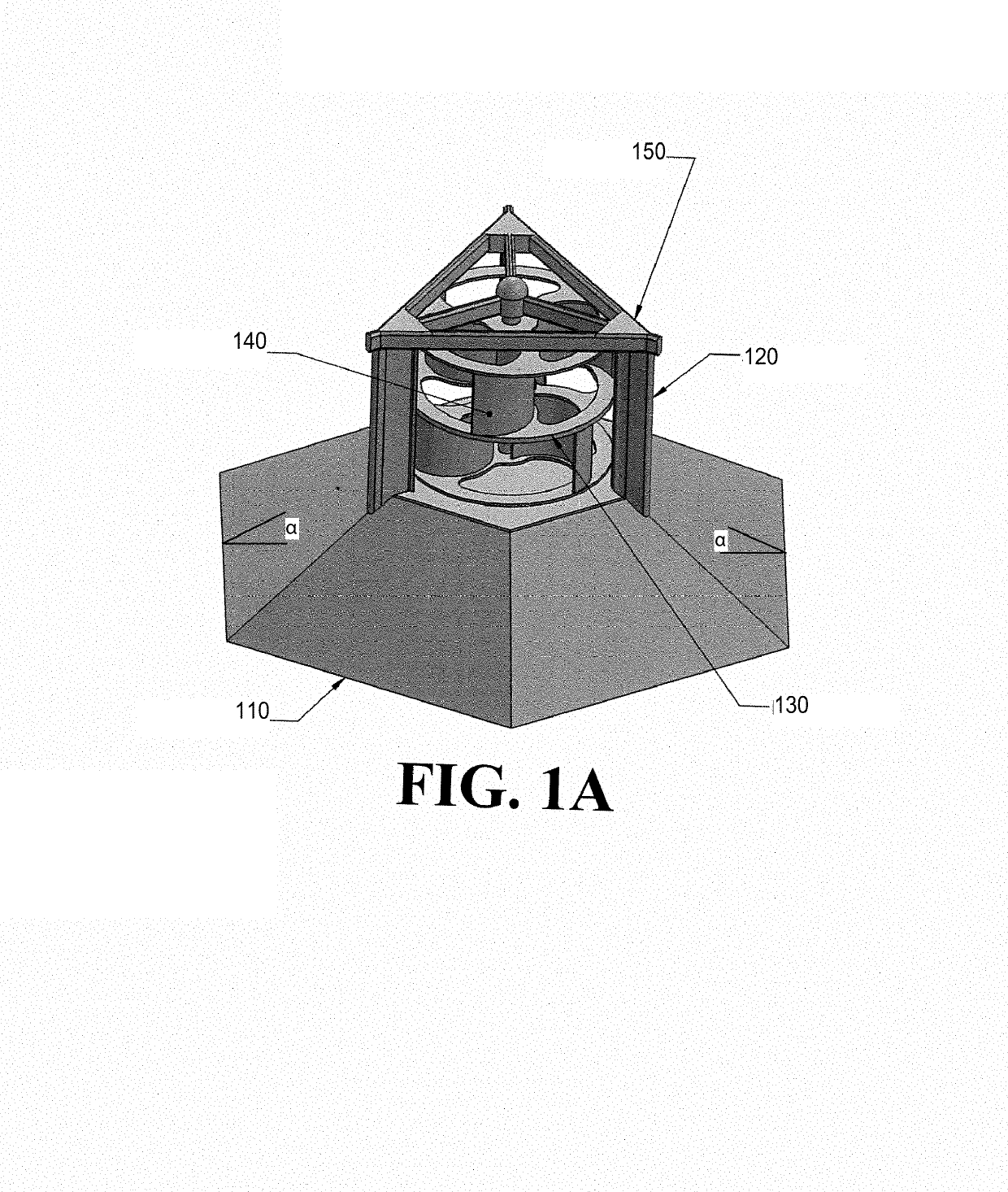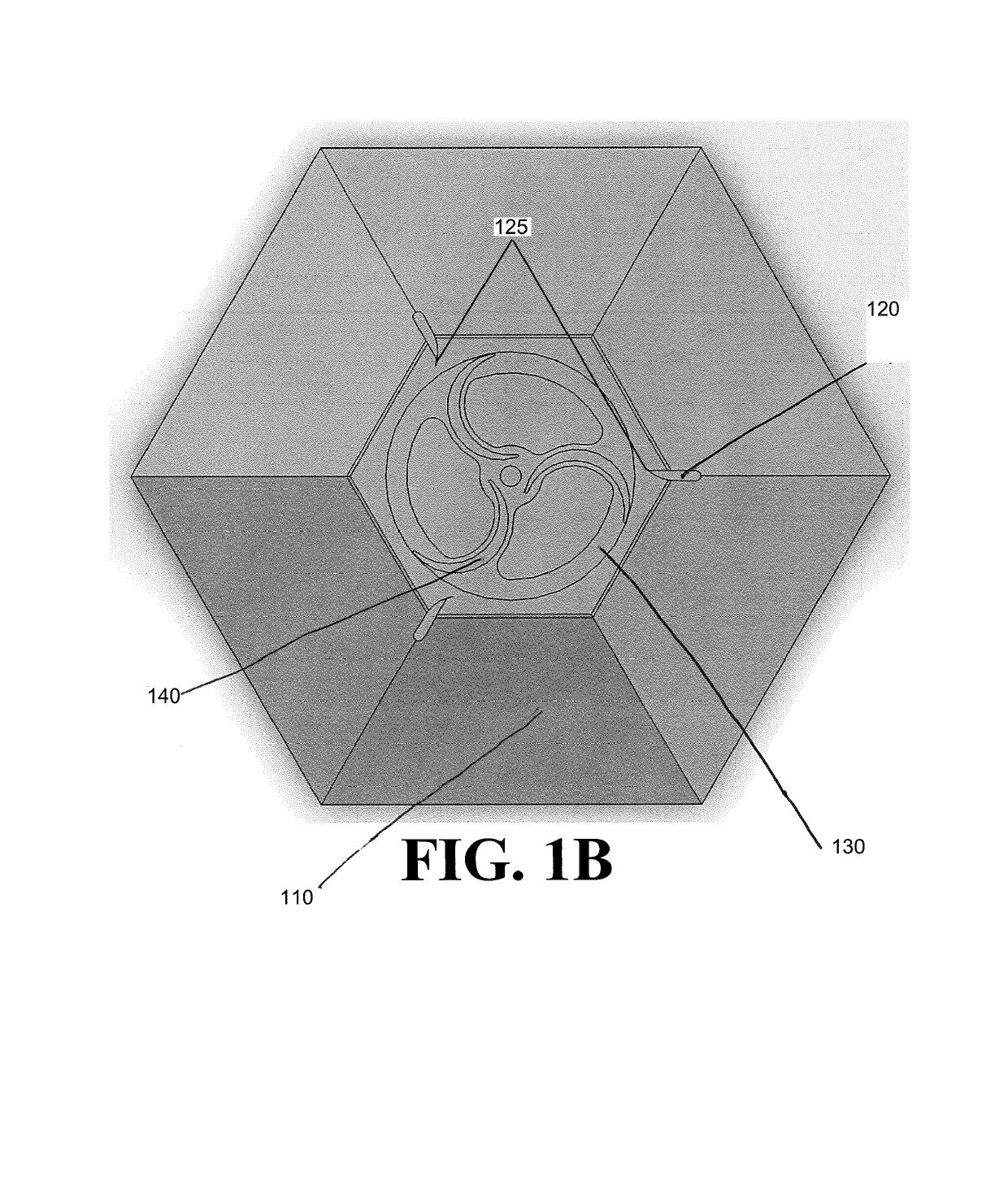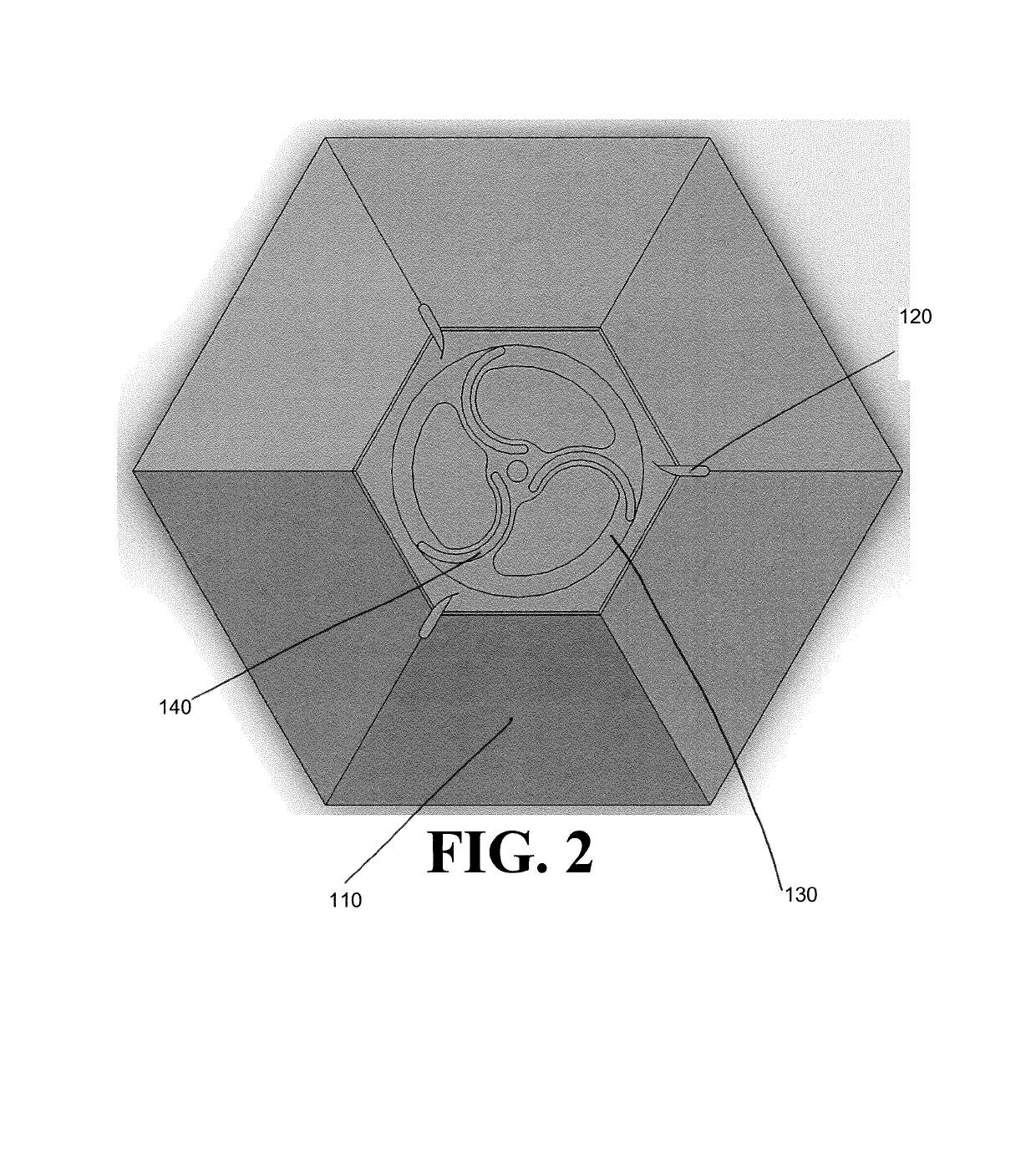Vertical axis wind turbine
a wind turbine and vertical axis technology, applied in wind motors, renewable energy generation, greenhouse gas reduction, etc., can solve the problems of reducing the device's ability to produce power in high winds, unreliable power source, and difficulty in building wind-driven power-generating devices that are effective and efficient under all wind conditions, so as to increase the available power, increase the wind speed, and the effect of drag and li
- Summary
- Abstract
- Description
- Claims
- Application Information
AI Technical Summary
Benefits of technology
Problems solved by technology
Method used
Image
Examples
Embodiment Construction
[0006]Certain embodiments include a vertical axis wind turbine, comprising at least one rotor blade, turning a shaft; at least one rotor plate, attached to the at least one rotor blade at one or more of a top and a bottom of the at least one rotor blade; a rotationally symmetric stator skirt, supporting the at least one rotor plate and comprising N identical trapezoidal panels, each trapezoidal panel forming an angle α relative to a horizontal axis, the stator skirt having a horizontal cross-section of a regular polygon having N sides; at least one stator fin, each stator fin being attached at a bottom of the stator fin to the stator skirt and comprising a fin flip, the fin flip being forming an angle β relative to a longitudinal axis of the stator fin and adapted to compress wind and direct the wind to the rotor blades in a predetermined direction; and a top frame, attached to a top of each stator fin.
[0007]In some embodiments, the predetermined direction is clockwise. In other emb...
PUM
 Login to View More
Login to View More Abstract
Description
Claims
Application Information
 Login to View More
Login to View More - R&D
- Intellectual Property
- Life Sciences
- Materials
- Tech Scout
- Unparalleled Data Quality
- Higher Quality Content
- 60% Fewer Hallucinations
Browse by: Latest US Patents, China's latest patents, Technical Efficacy Thesaurus, Application Domain, Technology Topic, Popular Technical Reports.
© 2025 PatSnap. All rights reserved.Legal|Privacy policy|Modern Slavery Act Transparency Statement|Sitemap|About US| Contact US: help@patsnap.com



